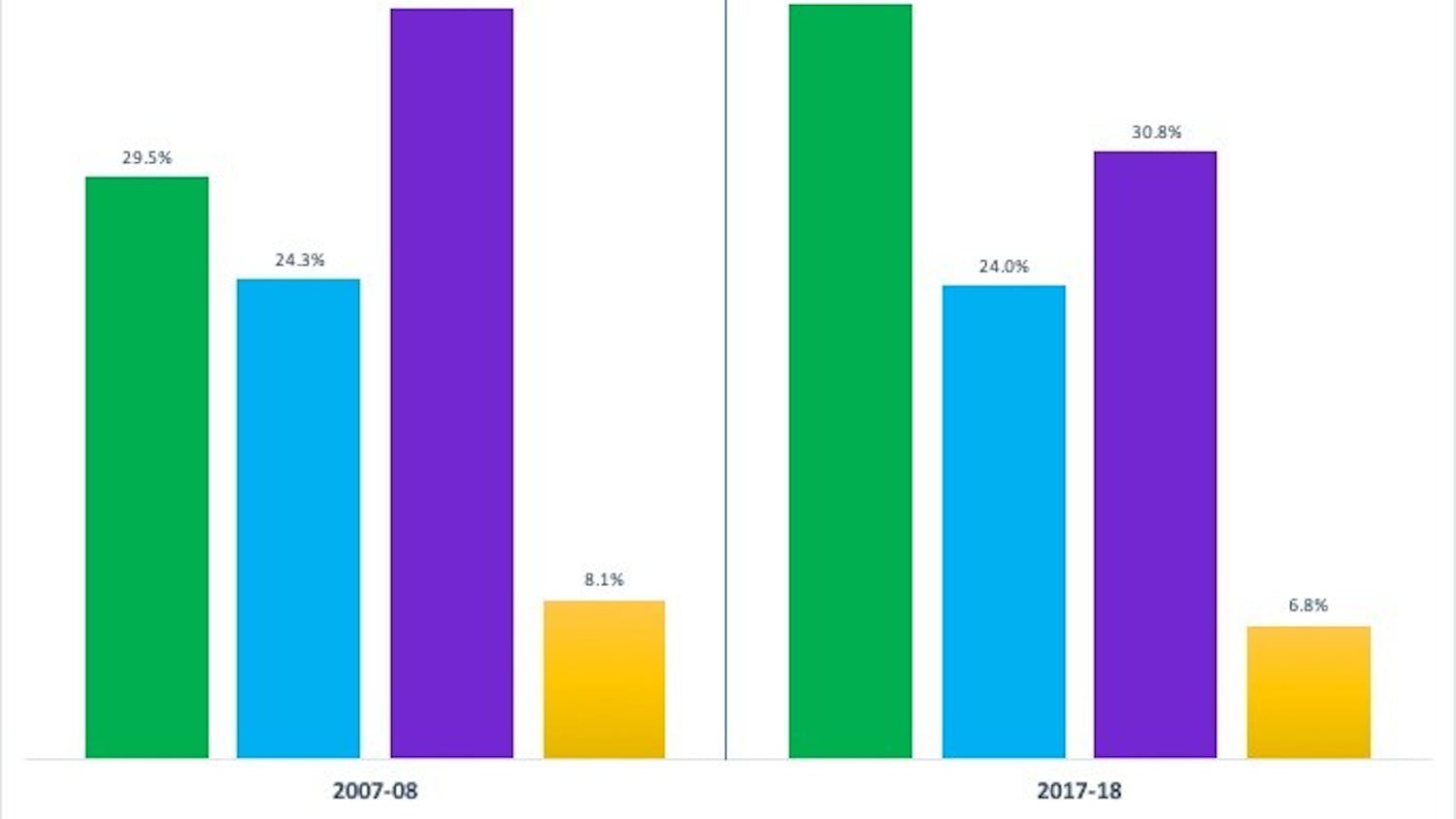Dartmouth — like many other top-tier institutions — often boasts a nearly exact 50:50 male-to-female student ratio in its undergraduate population. However, Dartmouth’s faculty gender ratio illustrates that the people who work at and represent our institution do not reflect the diversity of our student body.
According to the 2017 Annual Report on Faculty Diversity, approximately 31 percent of Dartmouth’s full-time, tenure-line faculty are women, and about 18 percent are racial and ethnic minorities. While these percentages vary across departments and disciplines, the teaching staff does not nearly match the ethnic and gender diversity of the student population: 49 percent of undergraduate students identify as female, while 38 percent identify as students of color.
To understand how this disparity might play out in female professors’ lives and experiences, I spoke with a few women from various departments.
Mathematics professor Rosa Orellana shared that the first memorable experience in which her gender played a role occurred when she was a master’s student and began applying for jobs.
“When I told my colleague — who happened to be a white male — that I was nervous about getting a job, he said, ‘Why are you worrying? You’re a woman. On top of that, a minority,’” Orellana said. “When people perceive that the accomplishments you have attained are because of your gender, it undermines all the effort, sacrifices and hard work you have put in.”
Following her time in school, she said that even now as a professor, there have been situations in which gender has affected her professional experience. Because of these experiences, Orellana said, she has felt self-doubt.
“Once, a person who led my committee told me to be careful to not say anything wrong, and it made me wonder if he was just saying that to me or if he would have said the same thing to a male colleague of mine also,” Orellana said. “It can be extremely stressful to constantly wonder if you’re being dismissed and not taken seriously just because you’re a woman or if it would happen anyway.”
Sociology professor Emily Walton also recounted an uncomfortable experience that occurred with a male individual who was a student in one of her classes.
“Once, I was sort of physically threatened by a student who wasn’t happy with his grade, and he backed me into a corner in a way that felt very threatening,” Walton said. “I do feel like there are times when I feel vulnerable in a way that I don’t think my male colleagues feel because I don’t think that kind of situation would have happened with a male faculty member.”
Walton said that she has also occasionally felt that her relationships with students might vary from those that students have with male professors.
“I feel like gender enters into the classroom in terms of the respect that is automatically given to professors,” Walton said. “I’m very careful to go by Professor Walton, just so students know they should give me some of the respect that isn’t always automatically given to female professors.”
The concept of a male-heavy space in academia is not one unfamiliar to most institutions. According to the same 2017 Annual Report on Faculty Diversity, Dartmouth showed similar percentages of female faculty at the assistant professor and associate professor levels and a higher percentage of female faculty at the full professor rank compared to peer institutions.
Biological anthropology professor Zaneta Thayer ’08 shared that she has frequently experienced white male-dominated academic environments over the course of her time in academia.
“When I go to academic conferences, the most senior people, on average, tend to be white and male, so I don’t think that, unfortunately, Dartmouth is an outlier in this respect,” Thayer said. “Sometimes, I even just have the underlying expectation that there won’t be many senior women and assume that it’s mostly going to be a white male-dominated space.”
However, as a Dartmouth alumna, Thayer also shared a message of hope for students who don’t see themselves represented adequately among Dartmouth faculty.
“Things are changing, and when I look at the faculty now compared to even when I was a student, I think there’s a lot more representation,” Thayer said. “I believe the College has really made genuine efforts to address these issues and disparities, fortunately.”


